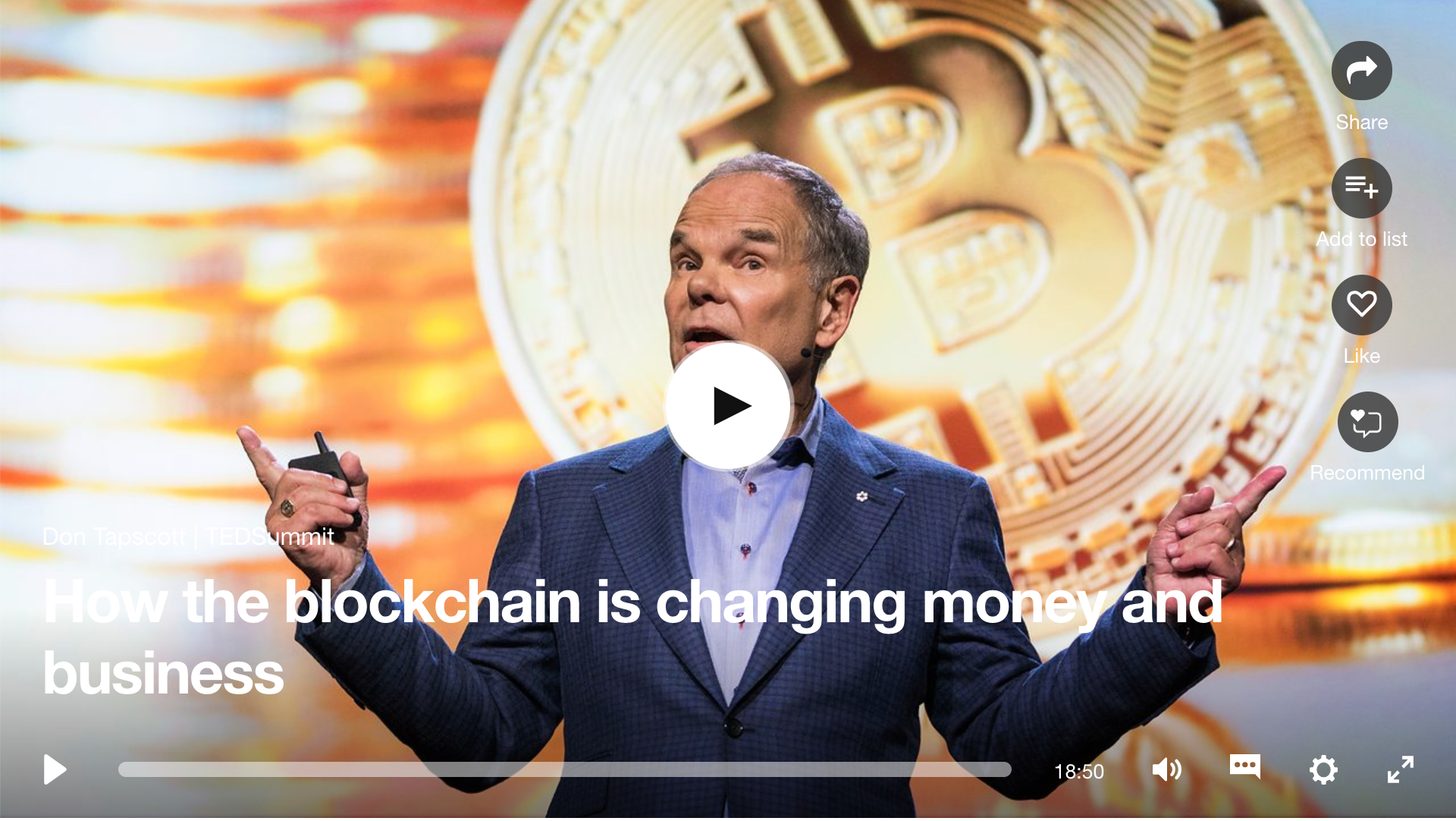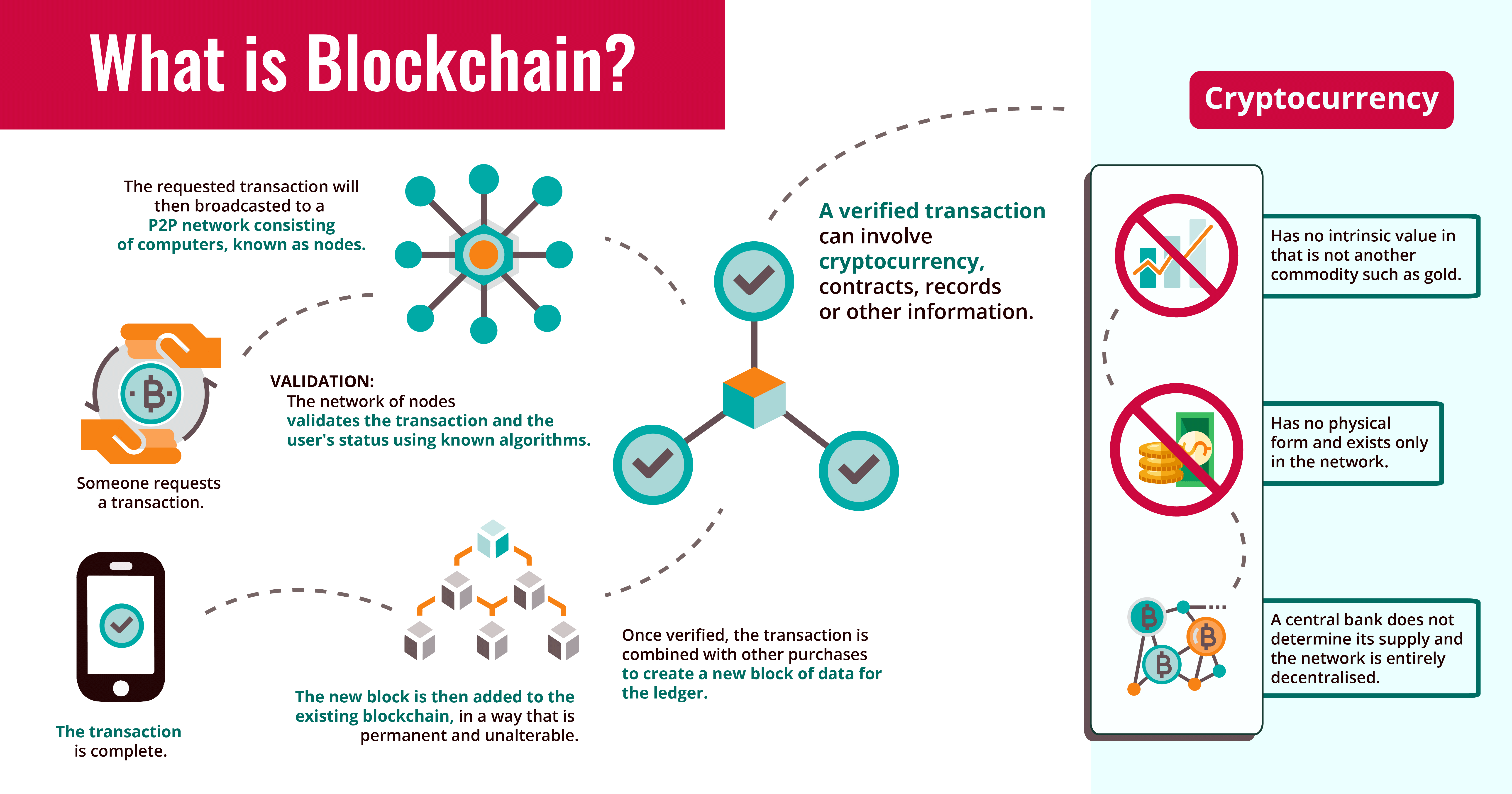You’ve heard of it, and you may know a bit about it. Blockchain is a “distributed ledger” of timestamped transactions which aren’t owned or managed by any single centralized organization; and once a record is created, it can’t be altered. Like electricity or the internet, it isn’t necessary to have any deep technical knowledge of how it works to appreciate the ways it can positively impact our lives.
“Blockchain isn’t just another technology. Blockchain is the foundation for the second era of the internet – an internet of value, where anything of value, including money, our identities, cultural assets like music, and even a vote can be stored, managed, transacted, and moved in a secure, private way. Blockchain is poised to transform every industry and managerial function —redefining the way we make transactions, share ideas, and manage workflow.”
~ Blockchain Research Institute
By way of introduction, here is one of the most popular TED Talks to date on the subject of blockchain, by Don Tapscott. Don is co-author of the popular book on the same topic, “Blockchain Revolution: How the Technology Behind Bitcoin and Other Cryptocurrencies Is Changing the World,” along with Alex Tapscott. The duo also founded the Blockchain Research Institute, and host the Blockchain Revolution Global Conference in Toronto, Canada (which I am attending and writing about April 24-25, 2019 – follow coverage on social media using #BRG2019).

Below is an infographic showing how the blocks in a blockchain are created, verified, and added, where they are permanently recorded. It should be noted that while Bitcoin and blockchain technology were invented at the same time by the anonymous person or person(s) code-named Satoshi Nakamoto, and therefore Bitcoin was the first “use case” for blockchain technology, they are two different things. There are now many applications using blockchain technology that are not tied to Bitcoin at all. There are hundreds of other cryptocurrencies now, as well as “smart contracts” for multiple industry applications which self-execute via programming, and many use cases that are not tied to cryptocurrency.

Some key areas where blockchain appears to be having the most immediate positive social impact in the social enterprise, nonprofit, or NGO (non-governmental organizations) spaces are:
- Democracy and Governance
- Land Rights
- Philanthropy, Aid, and Donors
- Health
- Agriculture
- Financial Inclusion
- Energy, Climate, and Environment
- On the near horizon: Digital Identity, Education, Human Rights, and Water


The Stanford Graduate School of Business Center for Social Innovation created an in-depth report, “Blockchain for Social Impact: Moving Beyond the Hype,” that delves deep into the main areas where blockchain is creating positive impact now and can be downloaded here.
As progress is made in these and other social good areas, organizations are starting to keep track of success stories and creative newcomers. The comprehensive list created by BreakerMag, 73 Blockchain Social Good Organizations That Are Actually Doing Something, is one easily readable starting point if you want to learn about specific use cases for social good that already exist or are underway.
Stay tuned for additional articles throughout 2019 and beyond featuring interesting blockchain and artificial intelligence social good case studies, interviews, conference coverage, and trends here. You can also find real-time updates on social media (@CharityIdeas), using the hashtags #blockchain4good, #AI4good, and #changetheworld.


